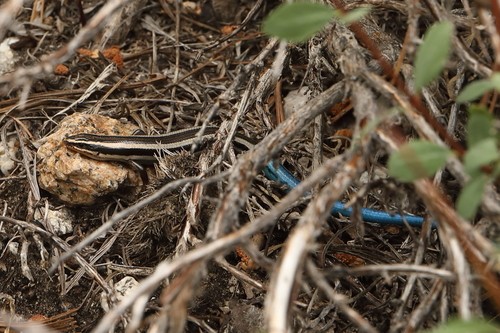Plestiodon skiltonianus utahensis
A species of Skinks Scientific name : Plestiodon skiltonianus utahensis Genus : Skinks
Plestiodon skiltonianus utahensis, A species of Skinks
Scientific name: Plestiodon skiltonianus utahensis
Genus: Skinks
Content
Description General Info
 Photo By graham_montgomery , used under ALL RIGHTS RESERVED /Cropped and compressed from original
Photo By graham_montgomery , used under ALL RIGHTS RESERVED /Cropped and compressed from original Description
Plestiodon skiltonianus utahensis is a fascinating lizard species characterized by its diverse behaviors and lifestyle adaptations. It thrives primarily in rocky habitats and takes refuge under stone structures, using them as protective shelters against predators. Intriguingly, this animal is known to perform tail autotomy, a survival mechanism where it 'drops' its tail to distract potential predators. Its diet, predominantly feeding on insects and invertebrates, contributes to the natural insect population control within its ecological surroundings.
General Info
Lifespan
5-10 years
Diet
Plestiodon skiltonianus utahensis primarily sustains itself on a diet comprising spiders and insects. Its meals are frequently enriched by beetles, caterpillars, and ants, indicating a predilection towards small arthropods.
Appearance
Plestiodon skiltonianus utahensis is a medium-sized lizard with a slender body and smooth, shiny scales. Its primary coloration is a vibrant blue-tail contrasted against a black, brown, or gray body. Young lizards exhibit brighter colors. This species has a distinct light stripe running down its back and possesses no wings, nor horns. Males often have more pronounced jaw muscles.
Behavior
Plestiodon skiltonianus utahensis exhibits a solitary lifestyle, often hiding under rock crevices or vegetation making camouflage crucial for evasion and survival. Diurnal by nature, it actively feeds on arthropods during daytime. This species is territorial, communicating territorial boundaries through chemical markings.